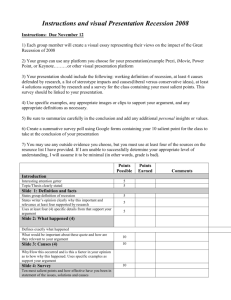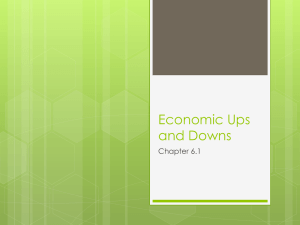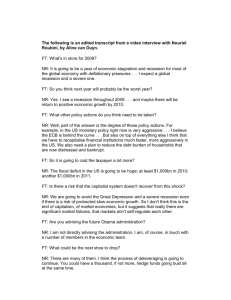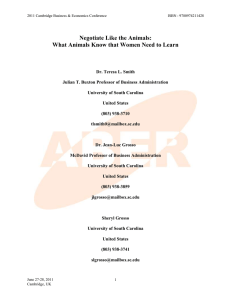Using Culture, Labor Market and Social Policies to Explain Gender
advertisement
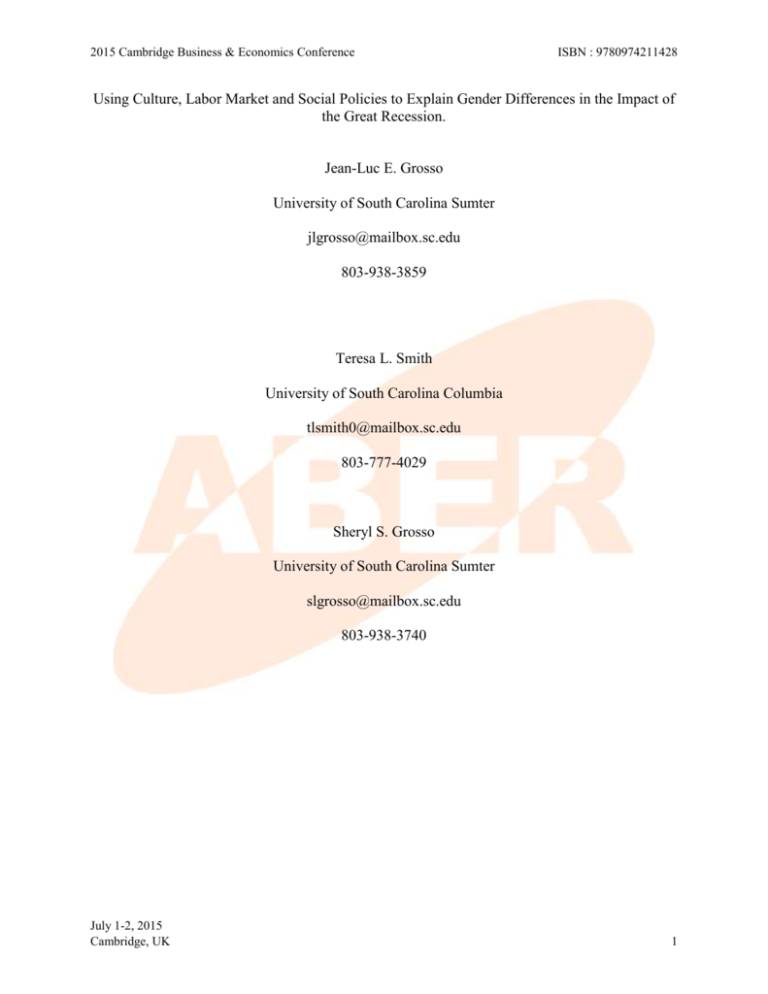
2015 Cambridge Business & Economics Conference ISBN : 9780974211428 Using Culture, Labor Market and Social Policies to Explain Gender Differences in the Impact of the Great Recession. Jean-Luc E. Grosso University of South Carolina Sumter jlgrosso@mailbox.sc.edu 803-938-3859 Teresa L. Smith University of South Carolina Columbia tlsmith0@mailbox.sc.edu 803-777-4029 Sheryl S. Grosso University of South Carolina Sumter slgrosso@mailbox.sc.edu 803-938-3740 July 1-2, 2015 Cambridge, UK 1 2015 Cambridge Business & Economics Conference ISBN : 9780974211428 ABSTRACT The Great Recession has been the worst economic downturn since the Great Depression, because of its length, severe job loss, and prolonged recovery period. Economies around the world have not yet fully recovered, and some are still experiencing severe cyclical pains. This paper will examine how men and women fared globally during the Great Recession. It will examine the differences in the features of the labor markets, the national social protection policies, and the national cultures, then examine how those differences effected the impact the recession had on men and women. The goal of this paper is to understand the national conditions for women and men during the recession and how these national conditions compare to those of other nations. INTRODUCTION Both men and women were vulnerable to the turbulent economicconditions of the Great Recession, but their trajectories have not been identical.Men experienced greater jobloss at the height of the recession, while women are being affected in larger numbers as nations exit the Great Recession. The Great Recession has affected families in some important ways. Labor force participation rates forwomen with children increased over the course of the recession, and families have become increasinglydependent upon women’s labor and earnings. Cyclical changes will affect workers, but also their families. The employed and primary breadwinner spouse could lose his or her job, forcing the other spouse to enter the labor force to make up for the loss of income. This is known as the added-worker effect. During the 2008-2014 period, most added-workers were women. July 1-2, 2015 Cambridge, UK 2 2015 Cambridge Business & Economics Conference ISBN : 9780974211428 In most nations, a gender comparison reveals that unemployment rates for men are now higher than those forwomen, but women tend to have more part-time positions, and be more under-employed than men. However, the labor market gender differences in terms of both numbers and trends vary greatly from nation to nation. For example, in November 2014, the unemployment rates in France were 10.2 % and 9.7% for men and women respectively. In the United States, they were 5.9% and 5.8% respectively. Why do we observe those differences, both across nations and also across genders? References Available Upon Request July 1-2, 2015 Cambridge, UK 3



